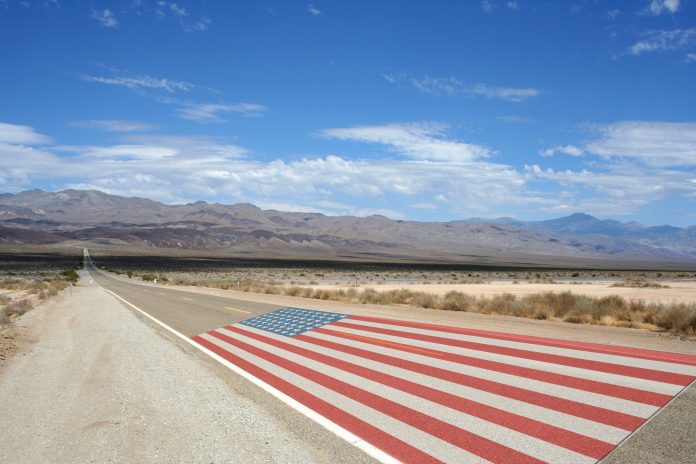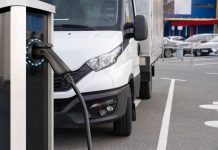Dr Gavin Bailey and Sydnee Grushack from Eunomia explore the challenges that the Biden administration faces as it looks to make the US transportation system more sustainable
As Joe Biden’s new Transportation Secretary, Pete Buttigieg can expect to have a long to-do list to tackle as he settles in behind his desk over the coming weeks. The former mayor of South Bend, Indiana, will be expected to play a significant role in the Biden administration’s environmental agenda.
Biden has placed climate change at the heart of his administration’s objectives – rejoin the Paris Agreement, carbon-free electricity by 2035, net-zero emissions by 2050 – and with Democrats winning control of the Senate, there is a reasonable chance of making decent progress towards these goals.
Electric Vehicles (EVs)
Transportation is one of the largest sources of carbon emissions in the US, with 28% of US greenhouse gas (GHG) emissions generated by the sector. Biden’s campaign platform included the installation of 500,000 electric vehicle (EV) charging stations by 2030 (which is estimated to stimulate the purchase of 25 million EVs), providing zero-emission, high-quality public transportation options to every city over 100,000 people and expansion of high-speed rail across the country.
An ambitious plan, certainly, and Buttigieg will be able to rely on Biden’s full backing for a green transportation revolution – but sizable roadblocks remain. In 2017, the American Society of Civil Engineers (ASCE) suggested that the US would need to invest $4.5 trillion by 2025 to fix its ailing infrastructure. Biden’s ambitions are likely to command a hefty price tag, potentially larger than that outlined by ASCE, necessitating a significant multi-faceted funding plan. Getting such a plan through Congress and the Senate with the Democrats’ razor thin majority is unlikely.
Moreover, beyond the financial considerations, the administration has two primary obstacles to overcome on transportation if it is to reach its decarbonisation goals: getting Americans to reduce their car usage and embrace mass transit systems, and switching remaining cars to EVs – no mean feat.
The US is a nation of car-owners. This is tied to both the long history and large number of industrial jobs in car manufacturing and oil consumption, but also to the image of freedom and affluence that are culturally represented by the automobile in the long-held image of the American dream. Currently, around 93% of US households have access to a car, and this number is still increasing. The US also has the 3rd highest number of cars per capita in the world at 838 vehicles per 1,000 people – a whopping 273,602,100 vehicles in the entire country – only lagging behind the microstates Monaco and San Marino.
As such, a move towards electric and sustainable transport – which needs to involve travelling less – is likely to be very difficult. The American love of the car is by no means innate, it took a huge effort to get Americans to accept the car in the first place, and the same effort will now be required to embed a culture of sustainable transport.
The Biden administration’s plans for a large-scale transition to electric cars isn’t starting from scratch – the US is the third largest market for electric cars in the world, selling 320,000 new units in 2019 – and there are attractive opportunities for US manufacturers both domestically and abroad, with other countries setting ambitious electrification policies. California is leading the charge in developing disruptive, electric technologies, with Tesla having muscled in on the established car market, pushing traditional large car manufacturers such as VW and Mercedes to race to scale electric car ranges.
However, the progress that is being made was hindered by the Trump administration’s focus on fossil fuels, causing the US to lag behind other nations. With the task of rolling out charging infrastructure and switching to electric vehicles made more difficult by the sheer size of the country, population and level of car ownership, significant public and private funding – estimated at $5 billion by the Biden team – will be needed to make EV purchasing attractive to the average US car user. The ambition to shift to electric vehicles is there, but there is no escaping that it is a huge undertaking.
Electric cars are no silver bullet, though, and the holy grail is really getting people to use mass transit systems, such as high-speed rail. This will involve significant upgrading of the US’s mass transit infrastructure, and incentives to get people to give up the car, or at least consider whether making a journey by car is the best option. This challenge has been made harder by the COVID-19 pandemic – recent commentary from MIT has linked COVID infection rates to public transport use. Convincing the American public to adopt public transport was hard enough before COVID, but in a post-COVID world it will require complementary carrots and sticks to achieve a meaningful switch.
This effort can be bolstered by the increase in mixed-use communities and by revitalising area that provide a link to public transportation. New York has the highest rate of public transportation usage in the US (and among the top in the world), but the density of the city that enables this rate is difficult to easily emulate. However, cities such as Denver and Atlanta are pursuing plans that encourage walkability and access to transport in urban planning.
One way of raising the required cash for infrastructure upgrades is taxation, most ambitious of which would be charging road users, specifically through Vehicle Mile Taxation (VMT), which taxes users by the distance they travel. Buttigieg included this progressive policy in his trillion-dollar infrastructure plan he put forward when running in the Democratic presidential primaries. Though Biden has not supported this policy, Buttigieg’s appointment has caused renewed interest that may influence future policy on the subject. This policy is somewhat controversial even in more progressive nations, so for it to be even raised as a possibility in the US indicates a substantial departure from the status quo. Both gas and carbon taxes, though offering significant revenues, are likely to offer diminished returns as the vehicle fleet is electrified, so a distance-based tax makes sense. If set to 1 cent per mile, such a policy would generate $322 billion over 10 years – likely higher, as VMT miles see a compound annual growth rate of 2%.
‘American Rescue Plan’
Greening the US’s transportation infrastructure and increasing mass transit usage will be a huge undertaking – but it is a key step towards reducing carbon emissions and readying America for the future of transportation. With transit infrastructure spending a key part of Biden’s economic recovery plans – he has earmarked $20 billion as part of his $1.9-trillion ‘American Rescue Plan’ – the new administration must resist the urge to invest in road building, a traditional means of kick-starting flagging economic growth. If the US is truly committed to a green recovery, Buttigieg and Biden must resist the road and support the rail. The decarbonisation of the US transportation sector is a sizeable one, but not insurmountable.











